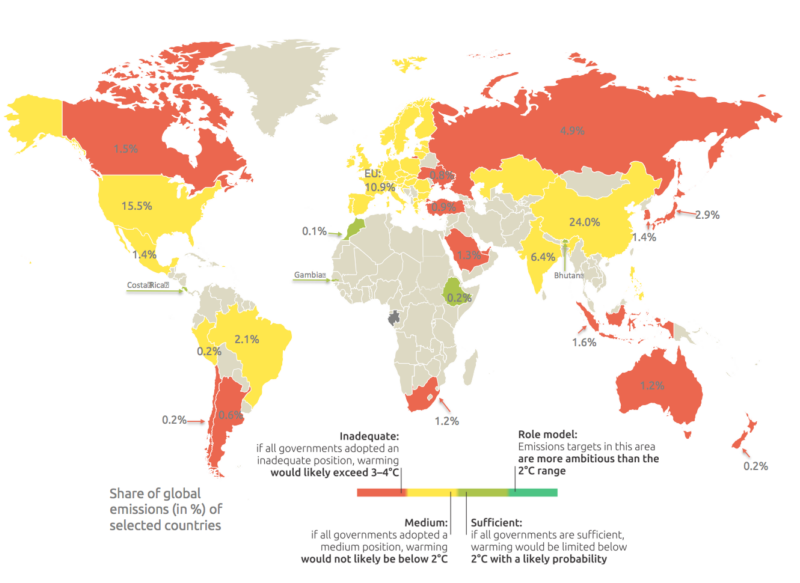Climate pledges will bring 2.7°C of warming, potential for more action
Share

With 158 climate pledges now submitted to the UN, accounting for 94% of global emissions, the Climate Action Tracker today confirmed this would result in around 2.7°C of warming in 2100 – if all governments met their pledge.
“This level of warming is still well above the agreed limit of 2degrees, and even further above the 1.5degrees called for by most governments here at the Paris climate summit,” said Marcia Rocha of Climate Analytics.
If those governments who submitted a conditional target were to have their conditions met, and increased their climate action accordingly, and if those who plan to build new coal plants were to cancel them, the gap can be reduced substantially.
“Looking at the conditional climate pledges, it’s clear that governments have already identified the potential for further mitigation and this could substantially contribute to closing the emissions gap – by around 15 percent,” said Dr Louise Jeffery of the Potsdam Institute for Climate Impact Research.
The CAT also released an analysis showing that if just a few governments were to increase their climate action, the savings associated with reducing deaths from air pollution could offset the costs, and substantially reduce the emissions gap.
The new analysis on co-benefits shows that Governments can offset the cost of stronger climate policies by taking into account the savings associated with reduced mortality only from harmful air pollutants such as particulate matter and ozone.
It shows that if just four governments – China, India, Japan, Russia, as well as the EU – were to take such action, they could reduce the 2 degree emissions gap by 25-45% and the 1.5 degree gap by 20-34%.
“There are so many co-benefits from taking action on climate change,” said Prof Niklas Höhne of NewClimate Institute. “Even with this very narrow and conservative analysis, showing the health benefits from from cutting air pollution, we see that cutting emissions makes good economic sense, and could significantly narrow the emissions gap.”
Last week the CAT released a report showing the potential impact on the climate from planned coal plants. The CAT has analysed that if these plants were not built, it would avoid 1.9-2.3GtCO2e of emissions in 2030.
“Right now, with the policies governments have in place, we are heading to a warming of 3.6 degrees,” said Prof Kornelis Blok of Ecofys. “Cancelling coal plants, while ramping up renewable energy and energy efficiency would reduce this ‘policy gap’ by a substantial amount. This is an important step towards decarbonising the power sector by mid-century.”
The CAT’s most recent INDC assessments, now posted on the website are: Bhutan, Costa Rica, The Gambia, the Philippines and UAE











